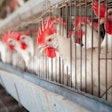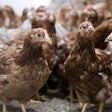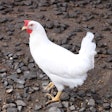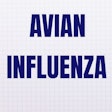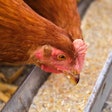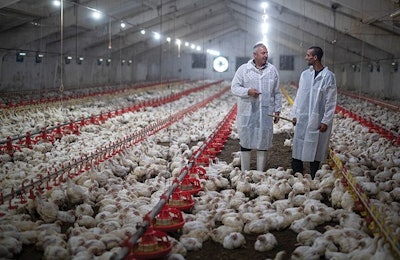
At the end of January, new scientific advice was issued by the European Medicines Agency (EMA) on the risk categorization of antibiotics for use in animals. The main change in this new advice is that four risk categories of antibiotics A to D have been identified, replacing the previous three categories.
The categories rank antibiotics by considering both the risk that their use in animals causes to public health through the possible development of antimicrobial resistance and the need to use them in veterinary medicine.
This update takes into account the experience gained since the initial categorization of antibiotics in 2014, the EMA notes, which proposed three categories for the antibiotics classified as Critically Important Antimicrobials (CIA) in the World Health Organization's CIA list, for instance those of most relevance for human health.
The revised categorization considers all classes of antibiotics and includes additional criteria, such as the availability of alternative antibiotics in veterinary medicine.
The EMA has also evaluated the impact of the route of administration in the selection of antibiotic resistance and included its conclusions in a separate list to consider when prescribing antibiotics.
The four classifications are:
Category A
Category A (Avoid) includes antibiotics that are not authorized in veterinary medicine in the European Union (EU). These medicines may not be used in food-producing animals but may be given to individual companion animals under exceptional circumstances.
Category B
Category B (Restrict) refers to quinolones, 3rd and 4th generation cephalosporins and polymyxins. Antibiotics in this category are critically important in human medicine and their use in animals should be restricted to mitigate the risk to public health.
Category C
Category C (Caution) covers antibiotics for which alternatives in human medicine generally exist in the European Union (EU), but only a few alternatives are available in certain veterinary indications. These antibiotics should only be used when there are no antimicrobial substances in Category D that would be clinically effective.
Category D
Category D (Prudence) includes antibiotics that should be used as first-line treatments, whenever possible. These antibiotics can be used in animals in a prudent manner. This means that unnecessary use and long treatment periods should be avoided, and group treatment should be restricted to situations where individual treatment is not feasible.
The categories are based on scientific advice, which was subject to a public consultation launched in February 2019.
The new intermediate Category C has been created for antibiotics which should be used when there is no available product in D that would be clinically effective.
According to Chris Lloyd, secretary general of the UK industry grouping Responsible Use of Medicines in Agriculture Alliance (RUMA): "The introduction of Category C should encourage veterinary surgeons and farmers to discuss whether lower-risk products within Category D could be used as an alternative.
"The new category should also focus minds on what management changes can be made to avoid the need for antibiotic treatments in the first place – such as biosecurity, vaccination, improved nutrition, or alterations to infrastructure, such as housing for handling facilities".
He continued that the advice acknowledges that there is a lack of alternative treatments to many antibiotics in Category C should disease arise. Veterinary surgeons can still prescribe Category C products to protect animal health and welfare.
"There is no doubt that macrolides are extremely useful in the effective treatment of some Mycoplasma species in poultry, Lawsonia in pigs, respiratory tract infections in cattle and, in some circumstances, lameness in sheep", he added.

The new Category C gives prescribers both flexibility and encouragement to think of alternatives. | Courtesy of EMA
The downward trend in European veterinary antibiotic use
Sales of veterinary antibiotics across Europe dropped by more than 32% between 2011 and 2017, reports the EMA.
In particular, two of the critically important classes of antibiotics for human medicine were used less in animals: sales of polymyxins declined by 66%, while those of 3rd and 4th generation cephalosporins decreased by more than 20%. These classes include antibiotics used to treat serious infections in humans caused by bacteria resistant to most species
The findings include data from the 31 countries of the European Economic Area and Switzerland, however, the situation is not uniform across Europe.
While 19 of the 25 countries that provided data for 2011-2017 saw a drop in sales of veterinary antibiotics of more than 5%, three countries recorded an increase of more than 5% in sales during the same period. The remaining three countries did not register a significant change in sales.
The substantial decline in sales of antimicrobials for some food-producing species seen in some countries indicates that there is still a high potential for a decrease of antimicrobial use in others, the EMA notes, especially in those with high consumption.
Antibiotic resistance - 25 Global Actions for 2025
www.WATTAgNet.com/blogs/23-poultry-around-the-world/post/39131





